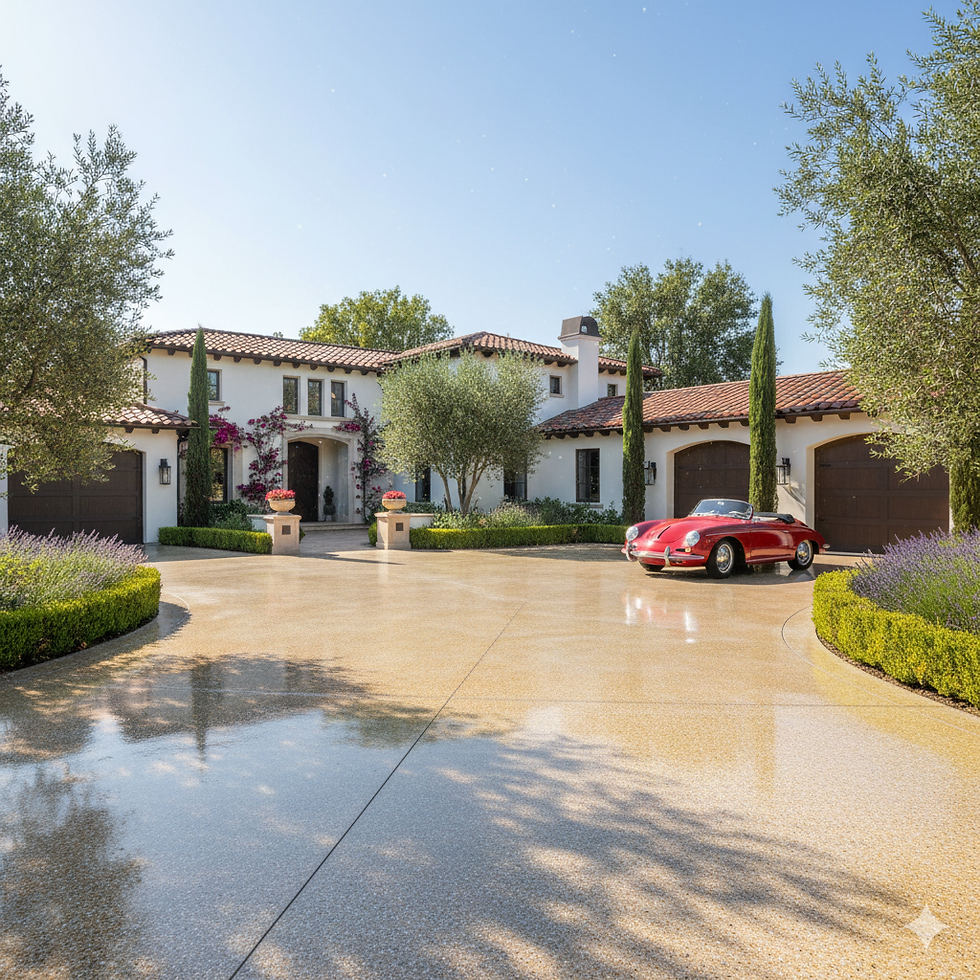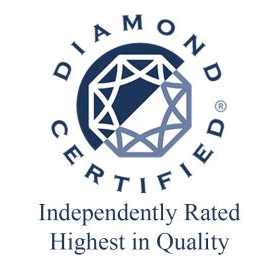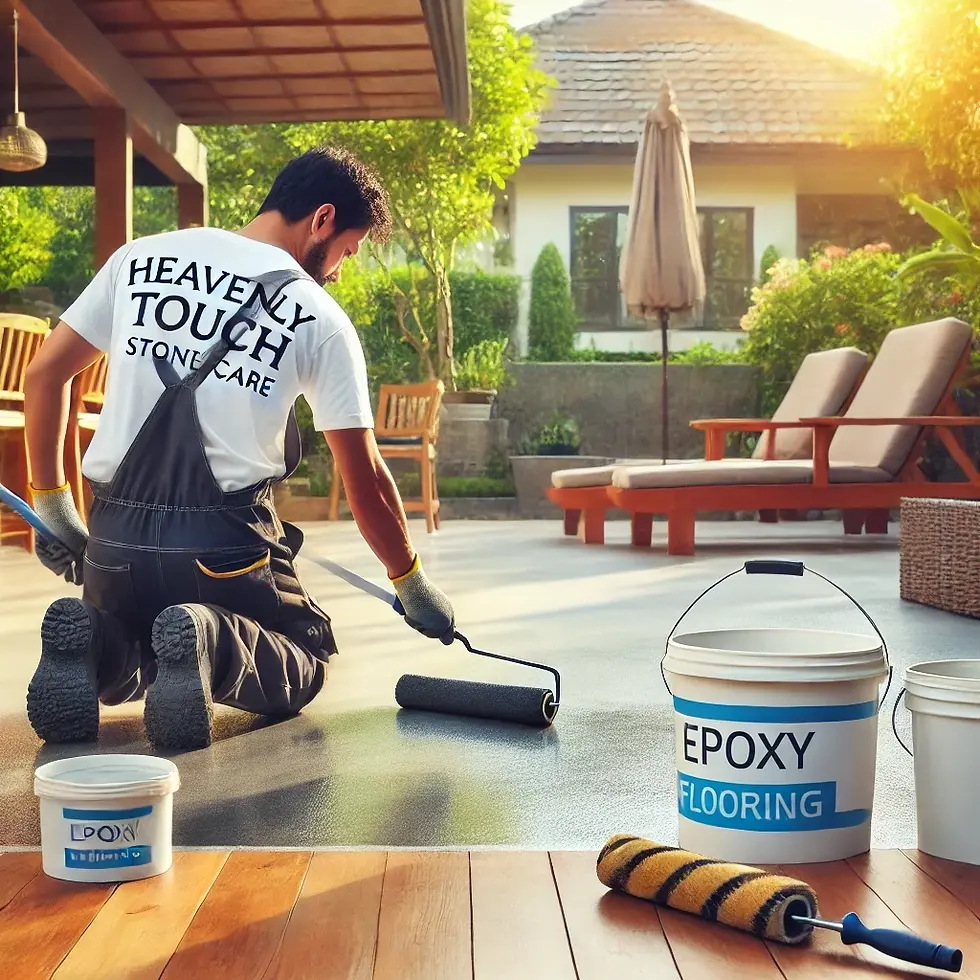Why UV-resistant epoxy matters for outdoor applications
- htouchstonecare

- Oct 17
- 7 min read

In the Bay Area, our outdoor spaces are more than just backyards; they are extensions of our homes. A pristine patio, a gleaming pool deck, or an inviting walkway is central to the California lifestyle. To protect these valuable surfaces, many property owners consider epoxy floor coatings, known for their durability and sleek finish. However, when you take epoxy outdoors, you face a relentless opponent: the sun. Understanding why UV-resistant epoxy is critical for outdoor applications is the key to a beautiful, long-lasting surface that won’t yellow, crack, or fail under the California sky.
The California Dream vs. The Harsh Reality of UV Damage
Your Vision for the Perfect Outdoor Space
You envision a stunning, functional outdoor area perfect for entertaining guests or enjoying a quiet morning. The surface needs to be resilient, easy to clean, and visually appealing. While standard epoxy seems like a perfect fit, its chemistry has a fundamental weakness that makes it unsuitable for exterior use. Without the right protection, that dream surface can quickly turn into a costly, frustrating problem.
The Unseen Enemy: How Sunlight Degrades Standard Epoxy Coatings
The primary reason standard epoxy fails outdoors is a process called photodegradation. Sunlight contains powerful ultraviolet (UV) rays that bombard your coated surfaces. The energy in these rays is strong enough to break the molecular bonds that form the epoxy's polymer backbone. This isn't a product defect; it's a chemical reaction.
This breakdown triggers a chain reaction that leads to several visible and structural failures:
Yellowing and Ambering: This is the most common sign of UV damage. The chemical change creates chromophores that give the coating a distinct yellow or amber tint, making a once-clean surface look aged and dirty.
Chalking: As the surface binder erodes, it forms a fine, powdery residue. This is a clear indicator that the coating is losing its integrity.
Embrittlement and Cracking: UV exposure makes the epoxy brittle. A brittle coating cannot flex with the natural expansion and contraction of the concrete slab below it. This mismatch leads to micro-cracks, peeling, and eventually, total coating failure.
What Does "UV-Resistant" Epoxy Really Mean?
To combat photodegradation, manufacturers developed "UV-resistant" epoxy. These advanced formulations represent a significant step up from standard products, but it's crucial to understand what this term actually implies.
The Science Behind UV Protection in Epoxy Floor Coatings
UV resistance is typically achieved in two ways. The first is by including a package of protective additives, such as UV absorbers and Hindered Amine Light Stabilizers (HALS). These act like a powerful sunscreen for the coating, absorbing harmful radiation and neutralizing the destructive molecules that cause damage.
The second, more effective method involves using a superior base chemistry. High-performance systems often use cycloaliphatic epoxy resins, which have a molecular structure that is inherently more stable and less prone to breaking down under UV light than the aromatic chemistry found in standard epoxies.
A Critical Look: UV-Resistant vs. UV-Proof
Here is a critical distinction every property owner must understand: these products are UV-resistant, not UV-proof. While they dramatically slow the degradation process, they do not eliminate it entirely. Independent industry analysis, including accelerated weathering tests under the (https://www.astm.org/d4587-11r19.html), has shown that even high-quality UV-resistant epoxies will eventually show some degree of yellowing after prolonged, direct sun exposure. They offer better performance, but they are not a permanent solution for surfaces under constant, intense sun.
The Superior Solution: Why We Recommend Polyaspartic Coatings for San Jose Homes
For the most demanding outdoor applications, the industry has evolved beyond epoxy. At (https://www.heavenlytouchstonecare.com/), we recommend polyaspartic coatings, a next-generation technology that represents the pinnacle of outdoor surface protection.
What Are Polyaspartic Coatings?
A polyaspartic is a type of aliphatic polyurea, not a traditional epoxy. This advanced polymer was engineered to solve the inherent weaknesses of epoxy systems. It is widely regarded by experts as the premier choice for any exterior concrete surface, from patios and pool decks to commercial walkways.
Unmatched UV Stability: A Permanent End to Yellowing
The most significant advantage of polyaspartic technology is its inherent, complete UV stability. Its chemical backbone is naturally immune to ultraviolet radiation. This means a polyaspartic coating is 100% UV stable and is guaranteed not to yellow or fade from sun exposure. This permanently solves the primary aesthetic failure that plagues all epoxy-based systems.
Engineered for Durability and Flexibility
Polyaspartic coatings are far more flexible than rigid epoxy. This elasticity allows the coating to expand and contract with the concrete substrate during temperature swings, preventing the stress cracks that are a common failure point for brittle epoxies. Furthermore, they offer superior abrasion resistance, with some formulations being up to four times more durable than epoxy, making them ideal for high-traffic areas.
Practical Advantages: Rapid Curing and Heat Resistance
A polyaspartic system can be ready for foot traffic in just a few hours, compared to the 24 to 72-hour cure time for many epoxies. This minimizes disruption and allows you to reclaim your space faster. They also exhibit excellent heat resistance and are not prone to "hot tire pickup," a common issue where hot car tires soften an epoxy coating and cause it to peel away from a driveway or garage floor. This makes them a perfect choice for
Polyaspartic Garage Floors San Jose.
Epoxy vs. Polyaspartic: A Head-to-Head Comparison for Your Outdoor Project
Choosing the right coating requires a clear understanding of how these two technologies stack up. The decision impacts not just appearance but also longevity and long-term value.
Performance Matrix: Which Coating Wins for Patios and Walkways?
This table provides an at-a-glance comparison to help you make an informed choice.
Feature | UV-Resistant Epoxy | Polyaspartic Coating |
UV Stability | Slows yellowing, but degradation is still likely over time. | 100% UV stable. Guaranteed not to yellow or fade. |
Flexibility | Rigid and brittle; prone to cracking with temperature changes. | Highly flexible; moves with concrete to prevent cracks. |
Durability | Good abrasion resistance. | Excellent; up to 4x more durable than epoxy. |
Cure Time | Slow (24-72 hours). | Very Fast (4-24 hours). |
Heat Resistance | Fair; can be damaged by hot tires. | Excellent; resists delamination from high heat. |
Expected Lifespan | 5-10 Years. | 15-20+ Years. |
Export to Sheets
The Long-Term Value: Why a Higher Initial Cost Saves You Money
While a professionally installed polyaspartic system may have a higher initial investment, its vastly superior lifespan makes it the more cost-effective choice over time. A standard epoxy that fails in 3-5 years will require costly removal and re-coating. A polyaspartic floor, engineered to last 15 years or more, saves you from this recurring expense and hassle, delivering a much lower total cost of ownership.
The Most Critical Step: Why Professional Installation is Non-Negotiable
Even the most advanced coating material will fail if not installed correctly. The quality of the installation is just as important as the quality of the product itself. This is why a professional San Jose Epoxy Floor Service is essential.
The Foundation of a Lasting Finish: Meticulous Surface Preparation
The single most critical factor for a lasting coating is surface preparation. A professional installer uses industrial-grade equipment, such as diamond grinders, to create a textured surface profile on the concrete. This profile, which is also a key step in concrete polishing, allows the coating to achieve a deep, tenacious mechanical bond. Simple acid etching, a common DIY method, is an inferior technique that often leads to peeling and failure. Professionals also test for moisture vapor transmission and apply mitigating primers to prevent bubbling and blistering.
Safety First: Integrating Non-Slip Additives for Pool Decks and Patios
Outdoor surfaces can become very slippery when wet. To ensure safety, professional installers integrate a non-slip aggregate into the final topcoat. This creates a textured finish that provides excellent traction for pool decks, walkways, and patios without compromising the aesthetic appeal. This is a crucial step for any
commercial epoxy flooring project where public safety is a concern.
Conclusion: Protecting Your Bay Area Investment with the Right Technology and the Right Contractor, Heavenly Touch Stone Care

When it comes to protecting your outdoor concrete surfaces from the California sun, the science is clear. While UV-resistant epoxy offers a degree of protection, it is a temporary and incomplete solution. Polyaspartic coatings deliver truly permanent UV stability, superior flexibility, and enhanced durability, making them the definitive choice for a beautiful, long-lasting finish.
By investing in the right technology and partnering with expert installers, you are not just applying a coating; you are making a long-term investment in your property's value, functionality, and aesthetic appeal.
Ready to transform your outdoor space with a coating that is scientifically proven to last? (https://www.heavenlytouchstonecare.com/contact) today for a professional consultation and a free estimate.
Frequently Asked Questions About Outdoor Concrete Coatings
For more information, please see our full [suspicious link removed].
Can I use a standard indoor epoxy for my outdoor patio?
No. Standard indoor epoxy lacks UV stabilizers and will rapidly yellow, chalk, and become brittle when exposed to sunlight. This will lead to widespread cracking and peeling, requiring a complete replacement.
Will a UV-resistant epoxy ever turn yellow?
While high-quality UV-resistant epoxies perform much better than standard formulas, they are not completely immune to UV degradation. Over many years of direct sun exposure, some degree of yellowing or ambering is still possible.
Are polyaspartic floors slippery when wet?
A smooth polyaspartic coating can be slippery when wet, just like any non-porous surface. To ensure safety, especially for pool decks and walkways, we always integrate a non-slip aggregate into the final topcoat to create a safe, textured surface.
How long does a professionally installed polyaspartic coating last outdoors?
With proper surface preparation and professional installation, a high-quality polyaspartic coating system is engineered to last 15 to 20 years or more, even in a demanding outdoor environment.
Why is professional surface preparation so important?
A coating is only as good as its bond to the substrate. Professional surface preparation using mechanical diamond grinding removes contaminants and creates the ideal textured profile for the coating to permanently adhere to. Without this step, the coating is highly likely to peel, chip, or delaminate prematurely.





Comments